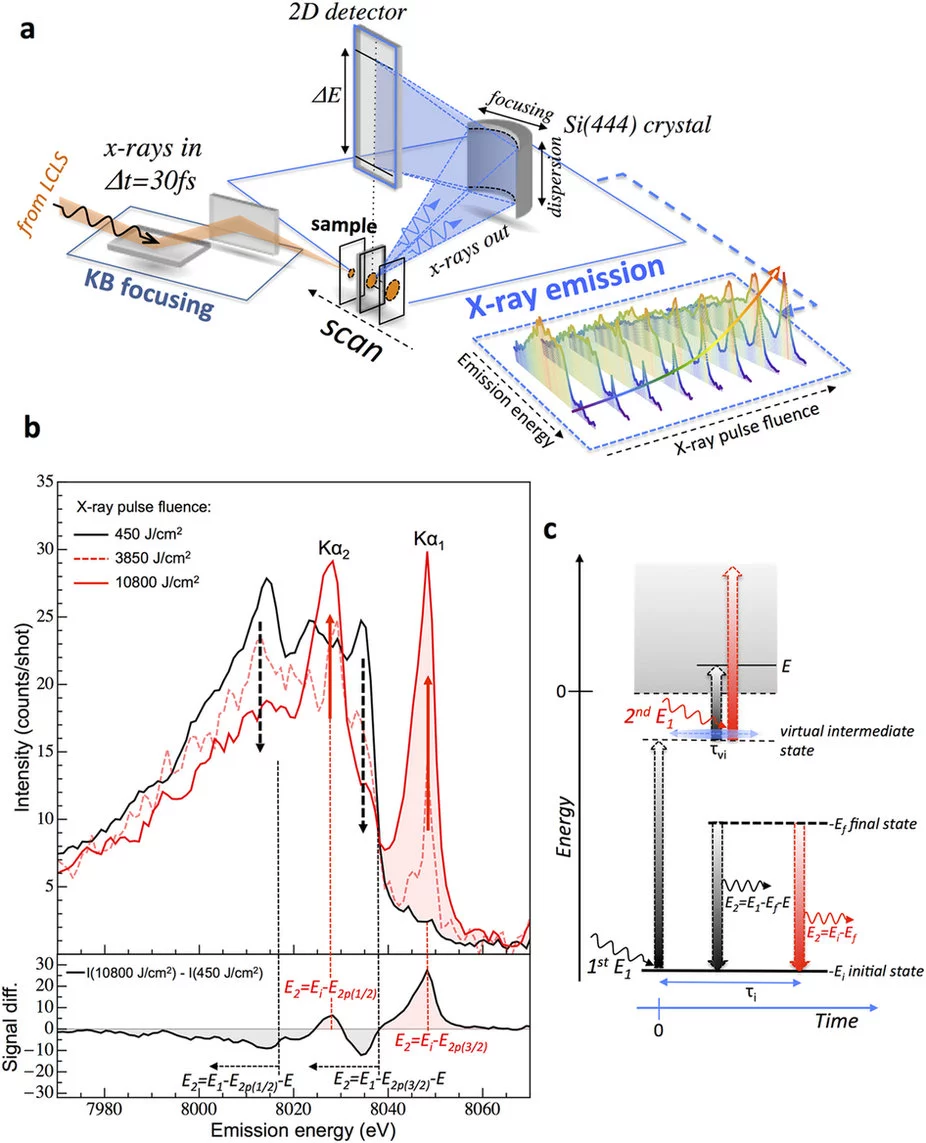X-ray techniques have evolved over decades to become highly refined tools for a broad range of investigations. Importantly, these approaches rely on X-ray measurements that depend linearly on the number of incident X-ray photons. The advent of X-ray free electron lasers (XFELs) is opening the ability to reach extremely high photon numbers within ultrashort X-ray pulse durations and is leading to a paradigm shift in our ability to explore nonlinear X-ray signals. However, the enormous increase in X-ray peak power is a double-edged sword with new and exciting methods being developed but at the same time well-established techniques proving unreliable. Consequently, accurate knowledge about the threshold for nonlinear X-ray signals is essential. Herein we report an X-ray spectroscopic study that reveals important details on the thresholds for nonlinear X-ray interactions. By varying both the incident X-ray intensity and photon energy, we establish the regimes at which the simplest nonlinear process, two-photon X-ray absorption (TPA), can be observed. From these measurements we can extract the probability of this process as a function of photon energy and confirm both the nature and sub-femtosecond lifetime of the virtual intermediate electronic state.
Contact
Dr Maarten NachtegaalSuperXAS beamline
Laboratory for Synchrotron Radiation and Femtochemistry (LSF)
Swiss Light Source, Paul Scherrer Intitute
5232 Villigen-PSI, Switzerland
Telephone: +41 56 310 30 56
E-mail: marten.nachtegaal@psi.ch
Original Publication
Establishing nonlinearity thresholds with ultraintense X-ray pulsesJakub Szlachetko, Joanna Hoszowska, Jean-Claude Dousse, Maarten Nachtegaal, Wojciech Blachucki, Yves Kayser1, Jacinto Sa, Marc Messerschmidt, Sebastien Boutet, Garth J. Williams, Christian David, Grigory Smolentsev, Jeroen A. van Bokhoven, Bruce D. Patterson, Thomas J. Penfold, Gregor Knopp, Marek Pajek, Rafael Abela & Christopher J. Milne
Scientific Reports, 13 September 2016
DOI: 10.1038/srep33292
